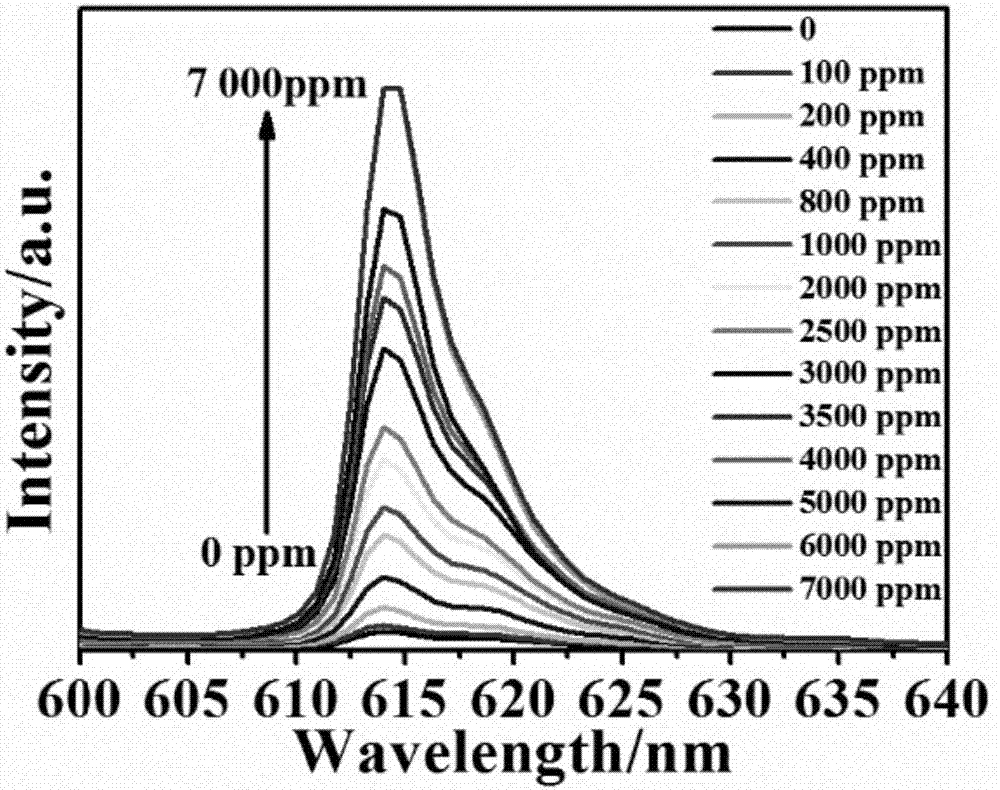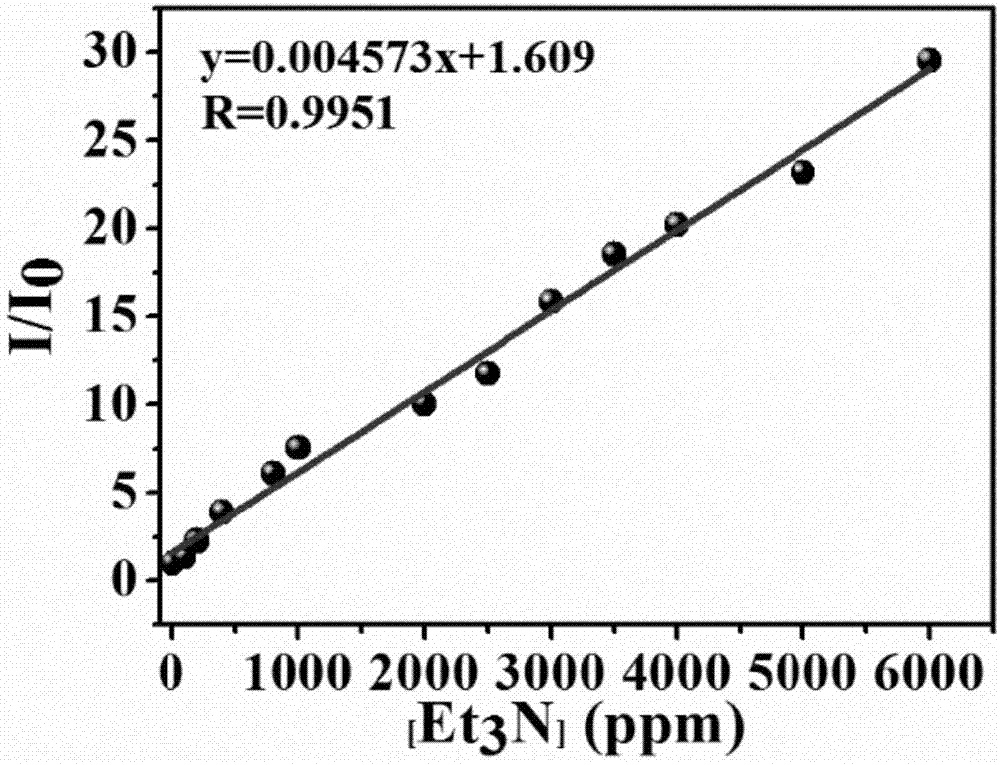Triethylamine fluorescence sensor based on L-type nanometer zeolite rare earth beta-ketone complex hybrid material and preparation method and application thereof
A fluorescence sensor and triethylamine technology, applied in the field of fluorescence sensors, can solve the problems of expensive instruments or components, long detection time, etc., and achieve the effects of simple detection, simple preparation method and mild conditions
- Summary
- Abstract
- Description
- Claims
- Application Information
AI Technical Summary
Problems solved by technology
Method used
Image
Examples
Embodiment 1
[0033] Example 1: Synthesis of ligand β-diketone (HPPO):
[0034] in N 2 Under the effect of protection, add 3-acetylphenanthrene (0.2202g, 1mmol) into LDA lithium diisopropylamide (2M, 1ml), stir at -40°C for 3h, raise the temperature to 0°C, add methyl pentafluoropropionate Esters (130μl, 1.2mmol), stirred for 3h, quenched with water, extracted with 30ml of dichloromethane, dried over anhydrous sodium sulfate, overnight. After the filtrate obtained by filtration was spin-dried, it was recrystallized with anhydrous ether and dichloromethane to obtain yellow needle-like crystals (HPPO).
Embodiment 2
[0035] Example 2: Synthesis of ligand β-diketone (HBFPD):
[0036] in N 2 Under the effect of protection, 2-acetylfluorene (0.2083g, 1mmol) was added to LDA (2M, 1ml), stirred at -40°C for 3h, heated to 0°C, added biphenyl-4-carboxylic acid methyl ester (0.2547g , 1.2mmol), stirred for 3h, quenched with water, extracted with 30ml of dichloromethane, dried over anhydrous sodium sulfate, overnight. After the filtrate was spin-dried, it was recrystallized from anhydrous ether and dichloromethane to obtain a yellow solid (HBFPD).
Embodiment 3
[0037] Embodiment 3: Nano L-type zeolite rare earth europium β-diketone complex hybrid material Eu(HPPO) n Synthesis of @K-NZL:
[0038] Nano L-type zeolite (0.1g) K-NZL and EuCl 3 • xH 2 O ethanol solution (0.1M, 2.5 ml) was mixed, refluxed at 80°C for 24 h and then centrifuged to obtain a white powder. After drying at 50°C, Eu@K-NZL (0.1g) and β-diketone (HPPO, 0.2g) were obtained Mix and grind, heat in vacuum at 100°C for 2 h, wash with dichloromethane for 3 times, and dry to obtain light yellow powder Eu(HPPO) n @K-NZL. Among them, rare earth ions accounted for 9.90% of the total mass of the fluorescent sensor, and β-diketone ligands accounted for 3.40% of the total mass of the fluorescent sensor.
PUM
 Login to View More
Login to View More Abstract
Description
Claims
Application Information
 Login to View More
Login to View More - R&D
- Intellectual Property
- Life Sciences
- Materials
- Tech Scout
- Unparalleled Data Quality
- Higher Quality Content
- 60% Fewer Hallucinations
Browse by: Latest US Patents, China's latest patents, Technical Efficacy Thesaurus, Application Domain, Technology Topic, Popular Technical Reports.
© 2025 PatSnap. All rights reserved.Legal|Privacy policy|Modern Slavery Act Transparency Statement|Sitemap|About US| Contact US: help@patsnap.com



